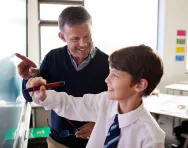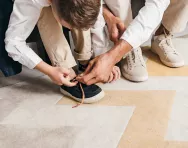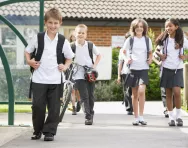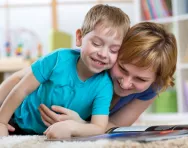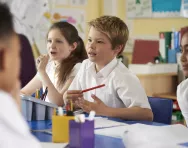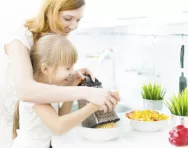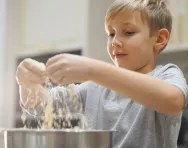Important update from TheSchoolRun
For the past 13 years, TheSchoolRun has been run by a small team of mums working from home, dedicated to providing quality educational resources to primary school parents. Unfortunately, rising supplier costs and falling revenue have made it impossible for us to continue operating, and we’ve had to make the difficult decision to close. The good news: We’ve arranged for another educational provider to take over many of our resources. These will be hosted on a new portal, where the content will be updated and expanded to support your child’s learning.
What this means for subscribers:
- Your subscription is still active, and for now, you can keep using the website as normal — just log in with your usual details to access all our articles and resources*.
- In a few months, all resources will move to the new portal. You’ll continue to have access there until your subscription ends. We’ll send you full details nearer the time.
- As a thank you for your support, we’ll also be sending you 16 primary school eBooks (worth £108.84) to download and keep.
A few changes to be aware of:
- The Learning Journey weekly email has ended, but your child’s plan will still be updated on your dashboard each Monday. Just log in to see the recommended worksheets.
- The 11+ weekly emails have now ended. We sent you all the remaining emails in the series at the end of March — please check your inbox (and spam folder) if you haven’t seen them. You can also follow the full programme here: 11+ Learning Journey.
If you have any questions, please contact us at [email protected]. Thank you for being part of our journey it’s been a privilege to support your family’s learning.
*If you need to reset your password, it will still work as usual. Please check your spam folder if the reset email doesn’t appear in your inbox.
7 risks to take with your kids

It's time to let our kids be kids. Let them try, and fall, and fail. Love them and support them, but trust in their resilience, too. They’re far more equipped for this journey than we realise.
50 Risks To Take With Your Kids (Hardie Grant, £12.99) is designed to give you some practical suggestions for taking measured risks with your children – risks that have both lived experience and evidence-based research behind them – to develop children who will hopefully turn into good humans and great adults. These risks are designed to be done with your child. It is not 50 things parents have to do, or 50 risks kids should take while their parents are doing other things. These are opportunities to connect and develop your relationship with your child.
Read on for a selection of seven risks, extracted from the book.
Risk 1: Be bored
We need to let children be bored. The ability to entertain oneself is learned, and needs to be practised. Technology, weekend sports, birthday parties and generally overbooked schedules mean that this skill is practised less and less frequently. But boredom is important.


Help your child succeed at school!
- English & maths worksheets direct to your inbox
- Follows the National Curriculum
- Keeps your child's learning on track
Many people believe that ‘boredom is for the bored’, and that being in a state of boredom demonstrates a lack of creativity or initiative, but in fact boredom is for creative people. Creativity doesn’t grow in the over-occupied, it grows in those who have time to let ideas develop, argues Professor Lea Waters, author of The Strength Switch. Boredom also develops resourcefulness. Giving your kids a few hours to entertain themselves will develop their ability to find things they want to do with their spare time.
So don’t feel guilty if there are some afternoons where you have no plans. Having no plans can be the very thing your kid needs to come up with the best ideas. When you notice your child playing on
their own, leave them. If they ask to watch TV, try to delay it. Set up some toys with your child, then tell them you need to go and do something else. In the short term you might hear ‘I’m bored’ ad nauseam, and your home will get really messy, but eventually, you’ll think your child has run away and you’ll freak out, only to discover they’re in their room playing LEGO silently and didn’t hear you call their name five times.
Risk 2: Raid the fridge
You may not consider making a cheese sandwich to be one of the riskiest things you can do, but trust me, when it’s a child making that sandwich, the mess is real – at least the first few times. As with all things, the better your child gets at it, the less mess there is, and the less you have to do. Eventually, if you have more than one child, the first child will make snacks for ALL YOUR CHILDREN and you can go and have a nice lie-down.
In case you haven’t already figured this out, kids need to snack – a lot. Letting them get their own snacks will make their constant hunger easier for both you and for them. Firstly, have healthy snacks available. (If your house is full of crisps and chocolate bars then your kid will eat crisps and chocolate bars.) Have snacks that your child can open and easily reach; a fruit bowl is great. Cereal is an easy one as well – getting them to make their own breakfast is a huge win. Drinks can be tricky for young kids, but practise pouring with water outside on a hot day: it’s fun and won’t cause any dramas. And remember, spills are all part of the learning process.
Make sure your child checks that they can have a snack before they get one. A six-year-old who eats a sandwich twenty minutes before dinner isn’t likely to eat much dinner, and they need to learn that mealtimes aren’t just about eating whenever they want.
Risk 3: Come last (or at least second) as they grow up
Many children are either not playing games at home or at schools because we don’t want them to be upset by losing, or they are playing games in such a way that ‘everyone wins’.
The greatest opportunity for developing skills at any game is by losing. Humans learn from bad experiences, so play games with your children and allow them to lose sometimes. Maybe not every game – you don’t want your child to be perpetually smashed, but you don’t want them to win every single game, either. If they are upset about losing, let them calm down and then talk to them gently about it being a game. You may even want to tell them you will sometimes let them win, and other times you win, so their expectation isn’t just that adults are terrible at board games. Until one day, your kid will actually beat you at a board game and you will have to harness your own resilience.
Games like draughts, Go Fish, UNO or chess are excellent for developing resilience and empathy. There is also the opportunity to practise this with peer-based games like Pass the Parcel or Hide and Seek. The more your child is used to the risk of losing, the better they will handle disappointment as they grow up.
Risk 4: Be socially awkward
Socially awkward situations are learning and growing opportunities. When your child is faced with a difficult situation at school, or a disagreement with a friend, talk to them about it. Ask them what they want out of the situation and what consequences they need to face with it. Role-play how they might handle it. Remember that the best outcome of an uncomfortable social situation is that your child learns from it. We need to learn how to deal with all types of people. These sorts of interactions and events shape the person we become.
This does not mean that you should ignore bullying or serious issues that may be occurring. It does mean that when you do step in, it should be because the issue is serious enough to justify you doing so, and because your child has already tried to deal with it on their own. The worst parenting decision would be to deal with your child’s issues in a way that they find embarrassing, because then they won’t tell you about them anymore. Instead, build a relationship focused on communication. It’s about giving your child the tools they need to deal with these situations, and trusting that they will, and them knowing that they can ask for advice when they need it.
Risk 5: Know that it’s okay to be the kid without the thing
Schoolyards are filled with kids bragging about the stuff they have, and it can lead to your kid thinking that their life is SO UNFAIR and why don’t they have the latest superblaster, etc. It is very easy to think that spending money on the toy or getting your kid to earn enough pocket money to buy it is the best way to go, but what if it isn’t?
Ultimately, life is full of differences, and it can be incredibly unfair. I’m not saying raise your child without any toys, just that you don’t have to give in to every trend. Your kid gets other things, or does other stuff, or eats other food.
Your kid is loved. Your kid does not need the latest thing, and maybe not having that thing will give them a bit more empathy for the kids who don’t have the next thing that sweeps through the playground.
Risk 6: Take charge of the kitchen
What recipes do you want your kids to be able to make by the time they are teenagers? I recommend introducing them to a new recipe every few months so they can build up their repertoire. Get them involved in choosing what to have for dinner and finding a recipe. You could watch Junior MasterChef and Nailed It! for inspiration, or find a cookbook you both enjoy. Or you can just start with what they like eating. Sure, your meals might be a bit hit and miss for a while, but the payoff will be worth it. Imagine not having to cook dinner Every. Single. Night.
Teach your kids a bit about supply chain logistics. Work with them on writing the shopping list, explaining concepts like budgets and food waste (if you buy a whole bag of onions, what are you going to do with the other seven of them?). Have them read the recipe and start by cooking it with them, helping them with safe knife skills and food preparation, then eventually work yourself out of the process. May I suggest a glass of wine while they do it? You can be management and quality control. Once they’ve mastered that recipe, start on another one. Make it enjoyable, of course, but also remember that in reality, not everyone is a MasterChef. Cooking isn’t always going to be fun – sometimes you just have to put a meal together.
Risk 7: Say thank you
How awesome is receiving a thank-you note? Like an actual hand-written letter, with a stamp on it. Writing thank-you notes is a skill we need to teach our kids. Okay, gratitude isn’t really a risk, but a lack of gratitude is. Entitlement is a risk. A dependent mentality is a risk. And gratitude can be instilled earlier than you think.
Gratitude is great for relationships, both new and old. Noticing and appreciating how others make your life better will, in fact, make your life better. Gratitude makes you more empathetic – when you recognise how people help you, you are more likely to recognise other emotions in people. This also helps boost your own self-esteem, because it means you are more likely to appreciate the way others help you, rather than being resentful of your need for help, which can make you feel devalued.
Gratitude should be a big part of parenting. You are doing a lot for your child, but as they grow older (and more independent) and you ‘do’ less for them, gratitude keeps a relationship strong. Raising kids with gratitude and not a sense of owing each other (which promotes shame) develops a healthier, more mature relationship with your children as they grow older. I see this in the students I teach: those who really appreciate their parents and what they do for them, versus those who just expect it.
43 more risks you should take with your kids
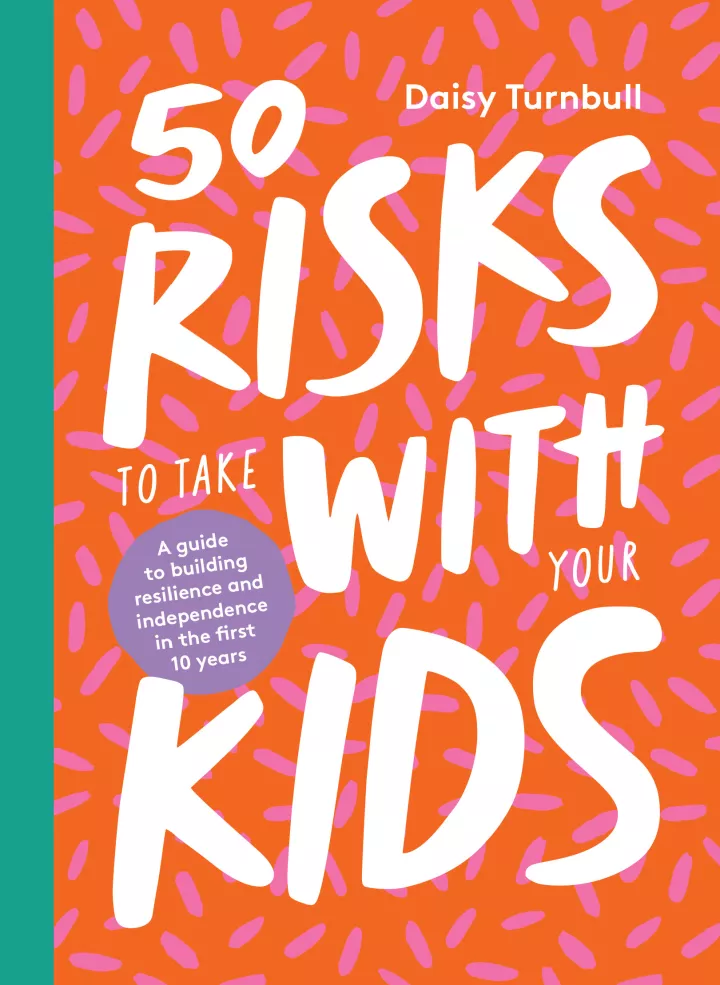
50 Risks to Take With Your Kids: A guide to building resilience and independence in the first 10 years is a warm, funny manual to help develop children's physical and social skills, responsibility and character before they enter those 'risky' teenage years. It suggests 'risks' like letting your child 'help-not-help' fold the laundry, or find their own solutions to problems.
As well as the 50 practical challenges, it includes some all-important parenting risks that will encourage you to step outside your comfort zone and think a little differently about raising kids.
